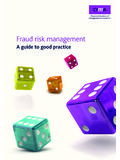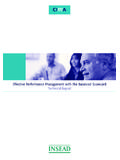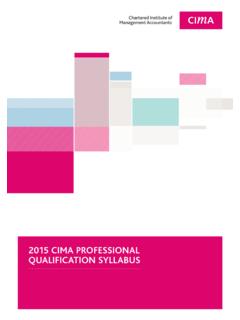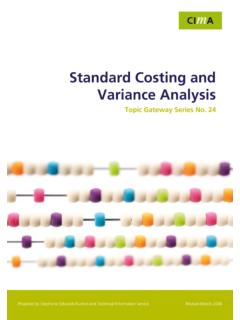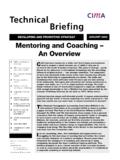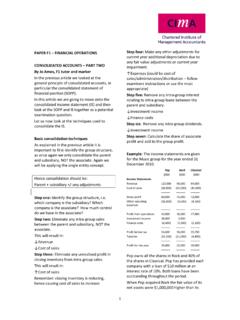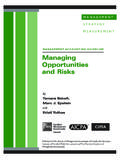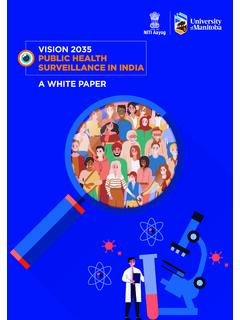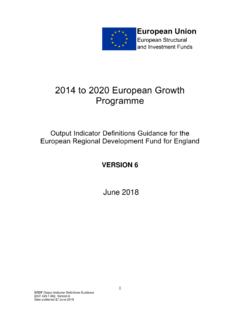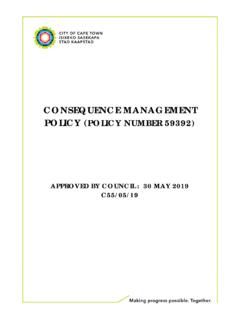Transcription of Activity Based Costing Topic Gateway
1 Activity Based Costing Topic Gateway Series 1 Activity Based Costing Topic Gateway Series No. 1 Prepared by Stephanie Edwards and Technical Information Service Revised November 2008 Activity Based Costing 2 Topic Gateway Series About Topic Gateways Topic Gateways are intended as a refresher or introduction to topics of interest to CIMA members. They include a basic definition, a brief overview and a fuller explanation of practical application. Finally they signpost some further resources for detailed understanding and research. Topic Gateways are available electronically to CIMA Members only in the CPD Centre on the CIMA website, along with a number of electronic resources.
2 About the Technical Information Service CIMA supports its members and students with its Technical Information Service (TIS) for their work and CPD needs. Our information specialists and accounting specialists work closely together to identify or create authoritative resources to help members resolve their work related information needs. Additionally, our accounting specialists can help CIMA members and students with the interpretation of guidance on financial reporting, financial management and performance management, as defined in the CIMA Official Terminology 2005 edition. CIMA members and students should sign into My CIMA to access these services and resources.
3 The Chartered Institute of Management Accountants 26 Chapter Street London SW1P 4NP United Kingdom T. +44 (0)20 8849 2259 F. +44 (0)20 8849 2468 E. Activity Based Costing Topic Gateway Series 3 Activity Based Costing Definition and concept An approach to the Costing and monitoring of activities which involves tracing resource consumption and Costing final outputs. Resources are assigned to activities, and activities to cost objects Based on consumption estimates. The latter utilise cost drivers to attach Activity costs to outputs. CIMA Official Terminology, 2005A development of the principles of Activity Based Costing (ABC) is Activity Based management (ABM).
4 Operational ABM is defined as: Actions, Based on Activity driver analysis, that increase efficiency, lower costs and/or improve asset utilisation . CIMA Official Terminology, 2005 Strategic ABM is defined as: Actions, Based on Activity Based cost analysis, that aim to change the demand for activities so as to improve profitability. CIMA Official Terminology, 2005 The main focus of this Topic Gateway is ABC. However, the development of ABC into ABM will be discussed further under In the current syllabus, CIMA students will learn and may be examined on this Topic in Paper P1, Management Accounting Performance Evaluation, Chapter 8, Developments in management accounting, and Paper P2, Management Accounting Decision Management, Chapter 10, Activity Based approaches.
5 Study systems for these papers are available from CIMA Publishing. Related concepts Activity Based management; Activity Based budgeting; time driven Activity Based Costing . Alternative approaches Traditional Costing approaches. Activity Based Costing Topic Gateway Series Overview The concept of ABC was first defined in the late 1980s by Robert Kaplan and William Burns. Initially ABC focused on manufacturing industry where technological developments and productivity improvements had reduced the proportion of direct labour and material costs, but increased the proportion of indirect or overhead costs. Comparison of traditional Costing and ABC The traditional method of Costing relied on the arbitrary addition of a proportion of overhead costs on to direct costs to attain a total product cost.
6 The traditional approach to cost allocation relies on three basic steps. 1. Accumulate costs within a production or non-production department. 2. Allocate non-production costs to production departments. 3. Allocate the resulting production department costs to various products, services or customers. This type of Costing system usually allocates costs Based on a single volume measure, such as direct labour hours or machine hours. While using such a simplistic volume measure to allocate overheads as an overall cost driver, this approach seldom meets the cause-and-effect criteria desired in accurate cost allocation. This method of Costing has become increasing inaccurate as the relative proportion of overhead costs has risen.
7 This distortion of costs can result in inappropriate decision making. ABC is therefore an alternative approach to the traditional method or arbitrary allocation of overheads to product, services and customers. OVERHEAD COSTS Material Handling Cost per material movement Set-up Procurement Cost per purchase order Cost per set-up Stage 1. Activity cost pools Stage 1. Activity cost pools Product lines Figure 1. Framework of Activity Based Costing 4 Activity Based Costing Topic Gateway Series 5 Application In contrast to traditional cost accounting systems, ABC systems first accumulate overheads for each organisational Activity . They then assign the costs of these activities to products, services or customers (referred to as cost objects) causing that Activity .
8 The initial Activity analysis is clearly the most difficult aspect of ABC. Activity analysis is the process of identifying appropriate output measures of activities and resources (cost drivers) and their effects on the costs of making a product or providing a service. ABC systems have the flexibility to provide special reports so that management can take decisions about the costs of designing, selling and delivering a product or service. The key aspect is that ABC focuses on accumulating costs via activities, whereas traditional cost allocation focuses on accumulating costs within functional areas. The main advantage of ABC is that it minimises or avoids distortions on product costs that might occur from arbitrary allocation of overhead costs.
9 Steps in development of an ABC System ABC uses cost drivers to assign the costs of resources to activities and unit cost as a way of measuring an output. There are four steps to implementing ABC. 1. Identify activities The organisation needs to undertake an in-depth analysis of the operating processes of each responsibility centre. Each process might consist of one or more activities required to produce an output. 2. Assign resource costs to activities This involves tracing costs to cost objects to determine why the cost occurred. Costs can be categorised in three ways: i. Direct costs that can be traced directly to one output. For example, the wood and paint that it takes to make a chair.
10 Ii. Indirect costs that cannot be allocated to an individual output, that is, they benefit two or more outputs, but not all outputs. For example, maintenance costs or storage costs. Activity Based Costing Topic Gateway Series 6iii. General/administration costs that cannot be associated with any product or service. These costs are likely to remain unchanged, whatever output is produced. For example, salaries of administration staff, security costs or depreciation. 3. Identify outputs Identify all of the output for which an Activity segment performs activities and consumes resources. Outputs might be products, services or customers. 4. Assign Activity costs to outputs This is done using Activity drivers.
